Figure 10 series:
This single ♂ specimen
exhibits color alteration as detailed in the article.
Fig. 10A. 270 g male,
Nov 2002, at end of 26 mo indoor headstart.
Fig. 10B. Age 26 mo. (lateral view), Nov 2002,
Fig. 10C. Age 47 mo, Aug 2004,
ca. 275g. Note color increase in sun-exposed region of carapace, surrounding
the transmitter cap, after 21 mo outdoors.
Fig. 10D. Age 70 mo, 397 g, Jul
2006. Note color deficiency in
vertebral scutes 2 through 5 (previously shaded by flap-epoxy and the cap
of his transmitter housing) revealed when
the cap and flap-epoxy were removed in Jul 2006, 44 mo after his first entry into an outdoor environment.
Fig. 10E. Age 70 mo., Jul
2006, Replacement transmitter housing is re-positioned to rear carapace
so that parts of former shaded zones of vertebral scutes 2, 3, and 5 would
receive sun.
Fig. 10 F Age 103 mo., April
2009, Note the good color that developed in the previously shaded
portions of vertebral scutes 2 and 3 during the 33 months since repositioning
the transmitter housing exposed those vertebrals to sun.
Fig 10G April 2009 examination
of color but with cap unscrewed from the anchoring flaps to reveal that
the vertebral scute 4 which remained shaded failed to develop good
color.
Note: Click on any image for full size resolution (some images
have been rotated 90° on this page)
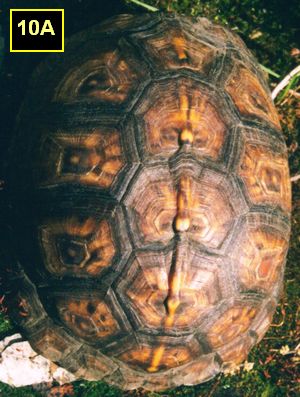
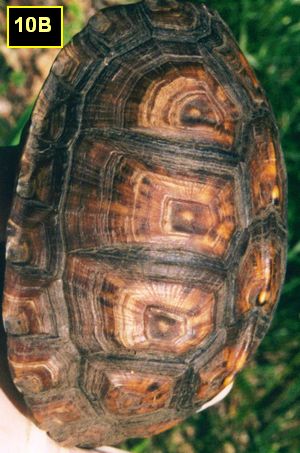
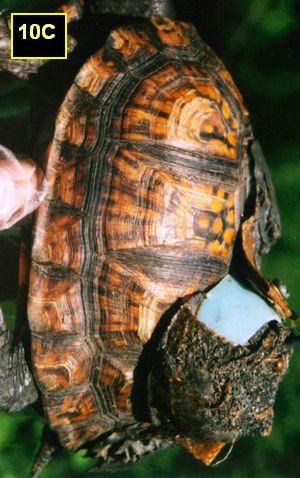
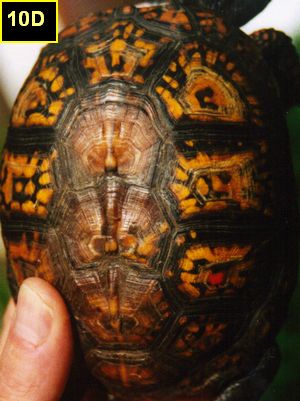

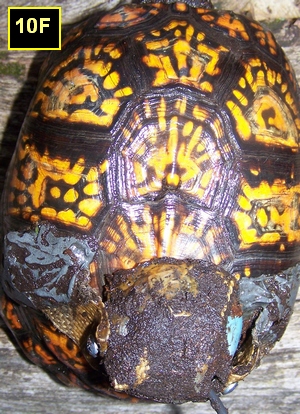
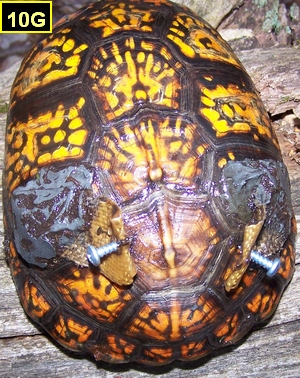
Note: Click on any image for full size resolution. Use BACK in
your web client to return.
 to the article Photo-dependent localized
color development in the eastern box turtle carapace.
to the article Photo-dependent localized
color development in the eastern box turtle carapace.
Text, graphics, and HTML code are Copyright
© 2010 Philadelphia
Herpetological Society, Inc. or their respective owners. All rights
reserved.
Above graphics cropped, resized to 300 pixels wide (aspect
retained; Lanczos3 filter) Thanks to FastStone .
Quick HTML done with SeaMonkey Composer.







 to the article Photo-dependent localized
color development in the eastern box turtle carapace.
to the article Photo-dependent localized
color development in the eastern box turtle carapace.